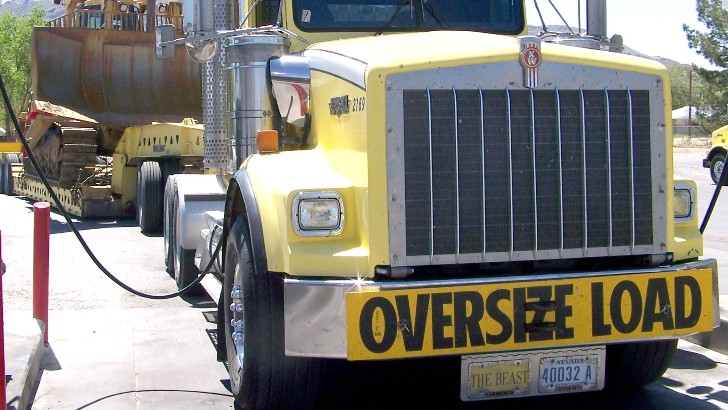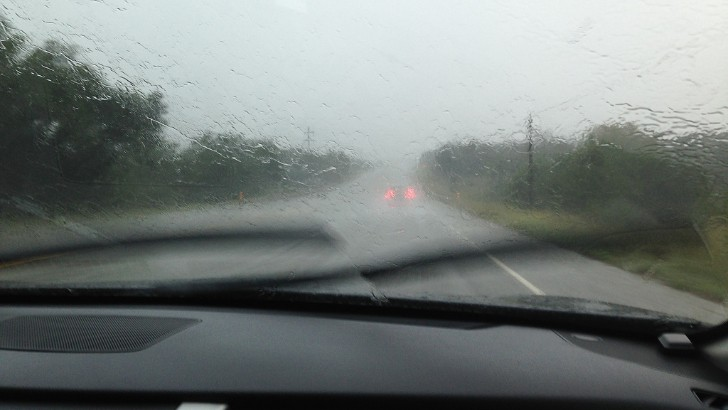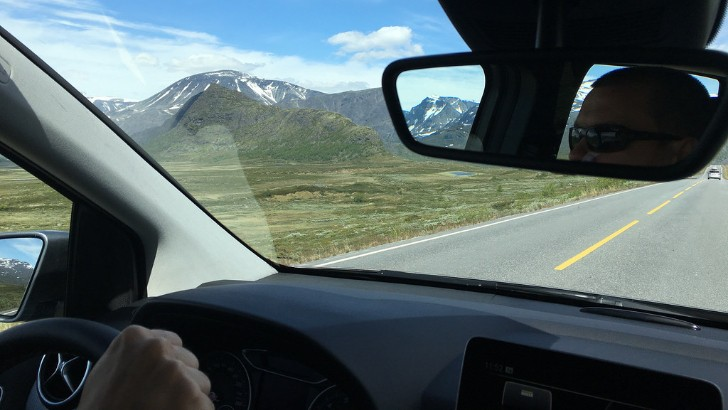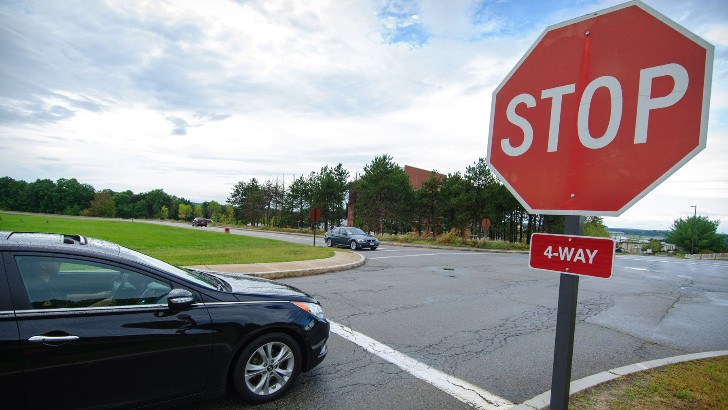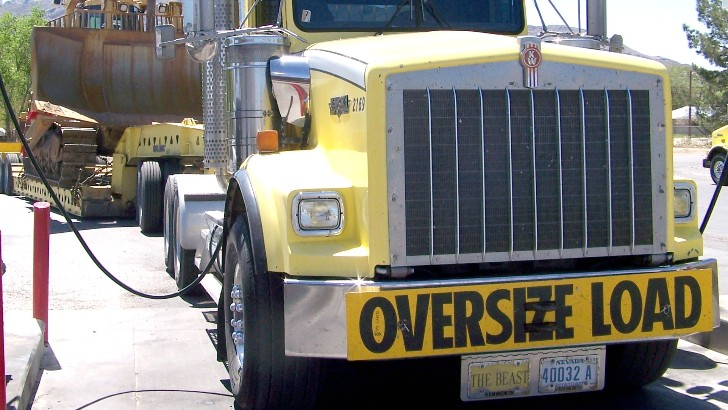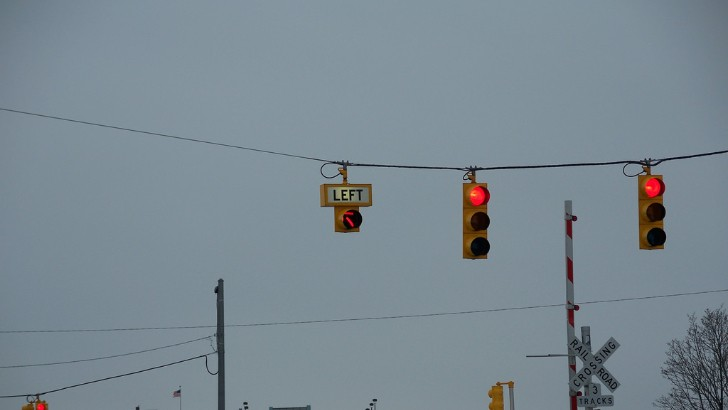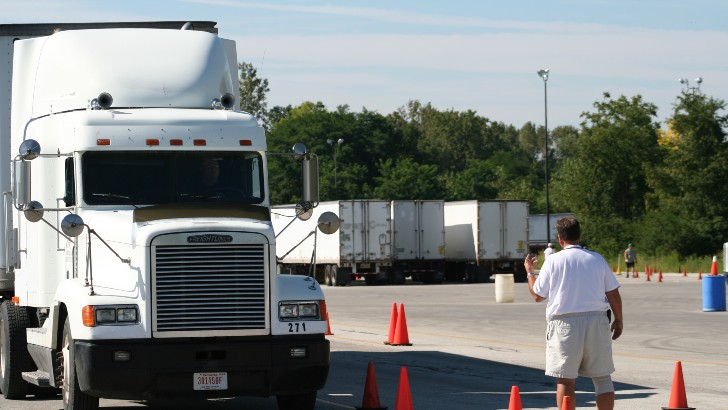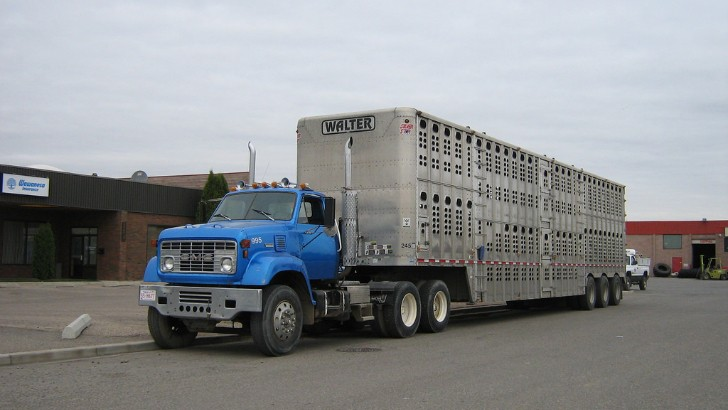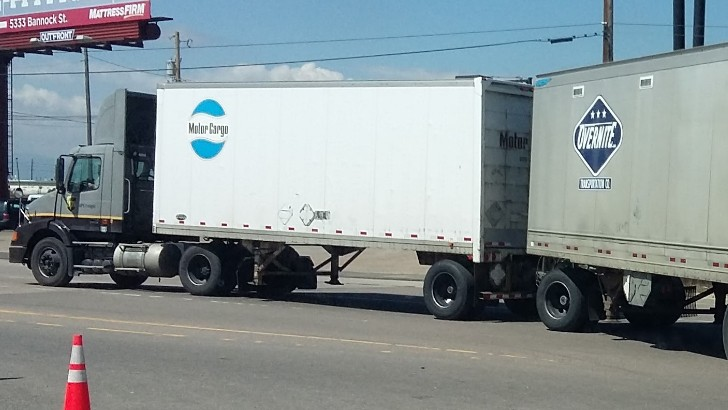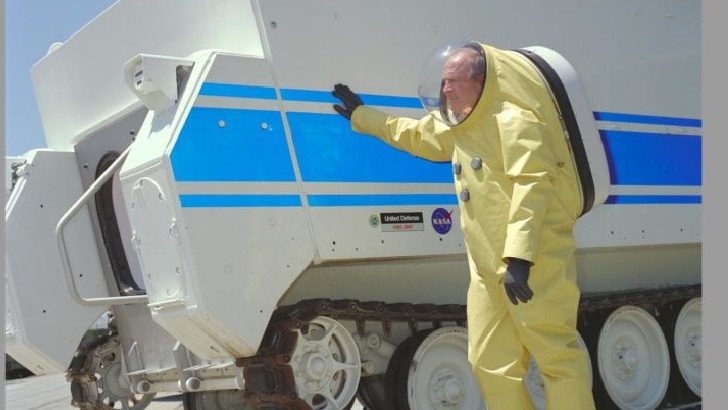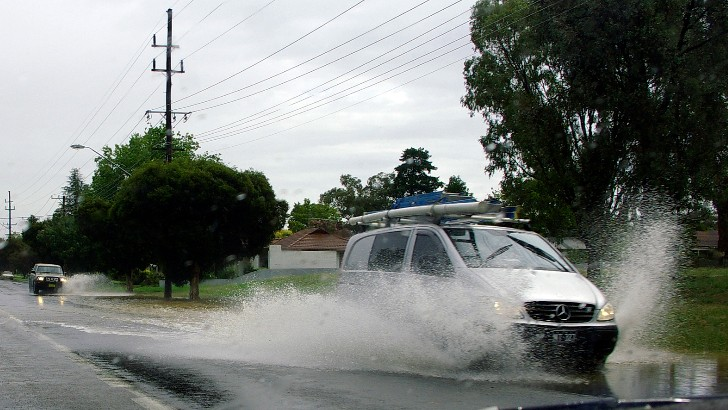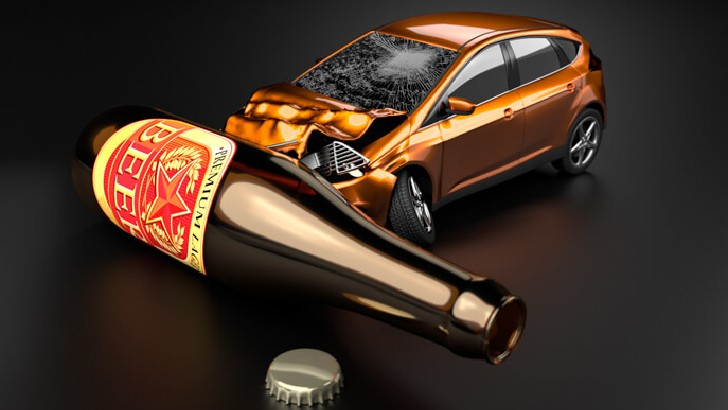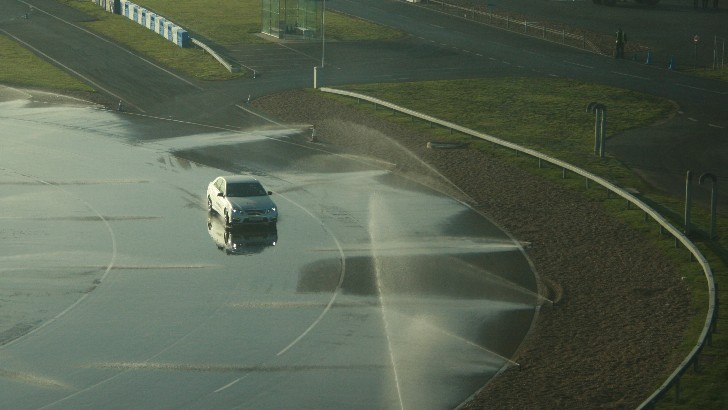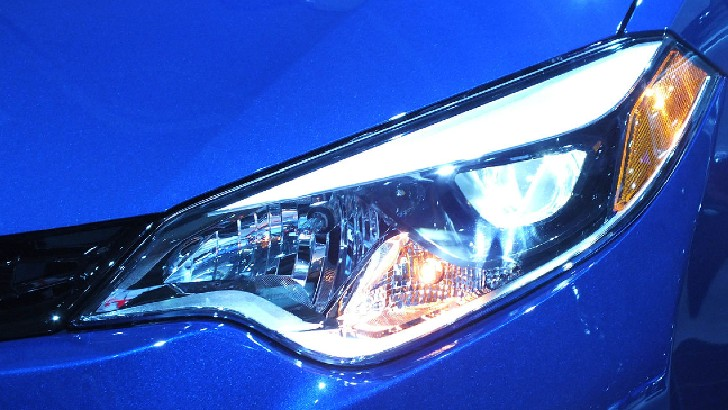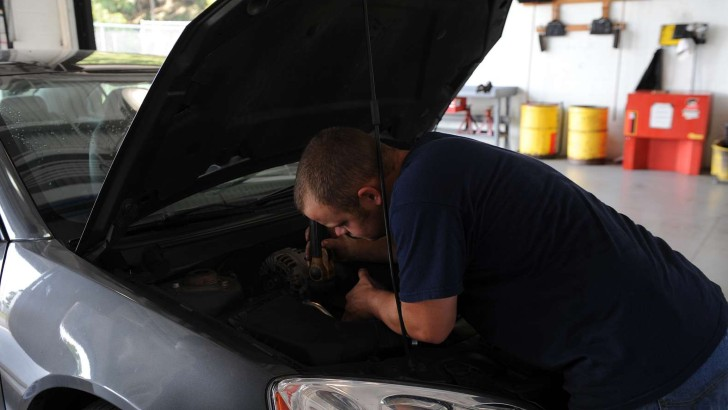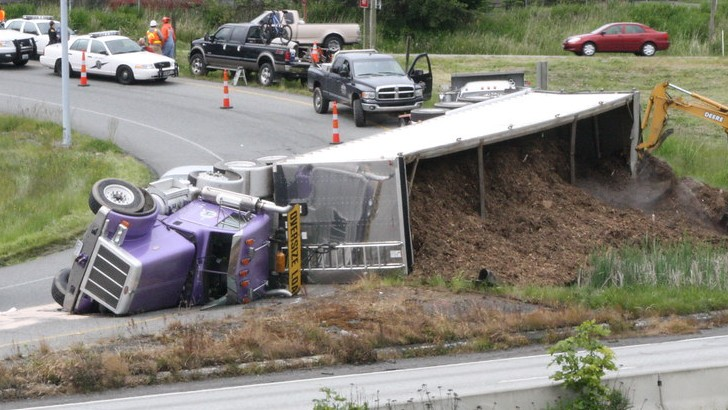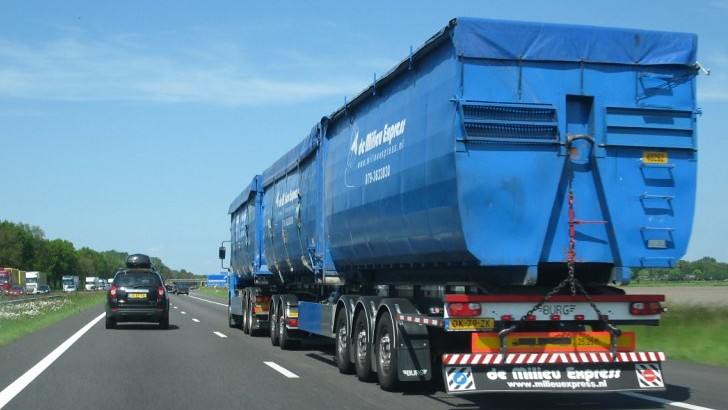Are You Aware of the Traffic Regulations? Test Your Knowledge With This Driver's License Quiz.
In typical circumstances, what is the maximum width allowed for commercial vehicles?
There is no limit for width
108 inches or 2.74 meters
102 inches or 2.6 meters
Vehicles can only be 102 inches wide (2.6 meters) at their maximum width. Hawaii has a wider width limit of 108 inches. For international standardization purposes, the 102-inch width limit has been adjusted to the equivalent of 2.6 meters, which is equal to 102.36 inches.
When do rainy days make streets the most slick?
When the rain first starts to fall
After the rain has subsided
When the rain first starts to fall
The roadways are the most slick when rain first begins to fall, because the water mixes with oil that hasn’t yet washed away. To avoid an accident, you should drive with extreme caution and prudence.
What method do you use to examine your blind spot?
Look in your rearview mirror
Look in your sideview mirrors
All of the above
While you should check your mirrors before changing lanes, you should also look over your shoulder to ensure that your blind spot is clear.
When you approach an upgrade, which of these should you avoid?
Move to the left-most lane
Check all directions for traffic
Use 4-way flashers if driving too slowly
Use the proper gear for maintaining speed
Move to the left-most lane
After assessing traffic in all directions, change to the right-most or curb lane as you approach an upgrade. Furthermore, you must use the proper gear in order to keep the proper pace. Use your four-way flashers if you need to proceed slower than traffic.
What is the minimum age to travel state boundaries in a truck?
21
Although some states allow you to earn your CDL at the age of 18, federal regulations require you to be 21 years old or older to drive a commercial vehicle over state boundaries.
In a four-way stop, who has the right of way?
The first to arrive or the car to the right
The first to arrive or the car to the right
The first car to arrive at a four-way stop has the right of way. If two automobiles arrive at the same time, you must yield to the car to your right. You have the right of way if you are the car on the right.
In typical circumstances, what is the maximum width allowed for commercial vehicles?
There is no limit for width
108 inches or 2.74 meters
102 inches or 2.6 meters
Vehicles can only be 102 inches wide (2.6 meters) at their maximum width. Hawaii has a wider width limit of 108 inches. For international standardization purposes, the 102-inch width limit has been adjusted to the equivalent of 2.6 meters, which is equal to 102.36 inches.
Is it possible to make a right turn at a red light?
No, Unless a sign specifies otherwise.
Yes, unless a sign says otherwise.
Yes, unless a sign says otherwise.
Right turns on red became lawful in all 50 states, the District of Columbia, Guam, and Puerto Rico in 1980, when the last state in the US allowed it. Only when a sign says differently is there an exemption.
In how many states can you hold a CDL at one time?
1
Having a CDL in more than one state is unlawful. The majority of drivers obtain their CDL in their home state. If you are over the age of 21, you can drive across state lines with your CDL.
Which CDL permits you to operate a truck with a gross combined weight rating (GCWR) of 26,001 pounds or more?
Class A
CDL licenses are divided into three categories: A, B, and C. You can drive a vehicle with a GCWR of 26,001 pounds in Class A. Depending on your endorsements, you may be permitted to operate some class B and C vehicles with this license.
What is the recommended frequency for cargo inspections?
Within the first 50 miles and every 3 hours or 150 miles
Within the first 50 miles and every 3 hours or 150 miles
The National Safety Code Standard 10 states that “all drivers shall stop and check their load within the first 80 kilometers and then every three hours or 240 kilometers (150 miles), whichever comes first.”
Your Hazardous Materials Endorsement application will be denied in all of the following circumstances EXCEPT when?
You have a poor credit history
You are unable to prove your legal status
You are wanted or charged with a felony.
The TSA has you on its list of security threats.
You have a poor credit history
The TSA has established specific guidelines to help you obtain a HAZMAT endorsement. You must be a citizen of the United States or a lawful permanent resident, which includes a refugee or asylum seeker with a valid and unrestricted employment authorization card. You must also be free of any felony convictions, indictments, or warrants. Other circumstances may cause the TSA to flag you as a security hazard.
How fast can you go before you start to hydroplane?
35 mph and above
Even at speeds as low as 35 mph, you could experience hydroplaning. That is why, when the conditions are ideal for hydroplaning, it is critical to drive cautiously.
How long will your CDL be suspended if you get a DUI?
1 year
Your CDL will be suspended for a period of 12 months or one year if this is your first violation. Multiple crimes may result in longer suspensions or license revocation. This is true even if you were driving your own car when you were arrested for DUI.
If your car starts to skid, what should you do?
Accelerate and turn away from the skid
Stop accelerating and turn away from the skid
Stop accelerating and turn into the skid
Accelerate and turn into the skid
Stop accelerating and turn into the skid
Stop accelerating and do not brake if you start to skid. Continually coast and turn into the skid until you regain control of your vehicle.
When is it appropriate to use your headlights?
At night and in poor weather conditions
All the time
The majority of states have laws requiring the usage of daytime headlights. Eighteen states, regardless of model, need it. Only seven states need it on certain models, with older vehicles frequently getting by without one. Many states have a modulating light law that allows light to switch between low and high beams, but it must be used at all times. Only a few states do not have any rules, but it is still a smart safety precaution to take.
How often should you inspect your vehicle before leaving?
Always before you operate the vehicle
Always before you operate the vehicle
You should conduct a pre-trip examination every time you run the vehicle to guarantee that nothing goes wrong.
Is it required that you wear a motorbike helmet?
It is conditional on the state.
It is conditional on the state.
Three states have no motorcycle helmet legislation at all (New Hampshire, Indiana and Illinois). A universal helmet law exists in 19 states, requiring everyone to wear a helmet when riding a motorbike. The remaining states have laws requiring some drivers to wear helmets.
What accounts for more than half of all truck driver fatalities?
Rollovers
Rollovers are a serious risk with combination vehicles, particularly in fully laden trucks. This could be one of the reasons why more than half of all truck driver deaths occur as a result of rollovers.
Is it necessary to maintain a greater gap between you and a semi truck than you would with a conventional vehicle?
It is conditional on the driving circumstances.
Yes
Yes, you should allow more room between you and a large truck than you would between you and a conventional passenger vehicle. Although reaction times are similar, the length of a large truck causes faster stoppages.
Oh no! You failed. You shouldn’t drive.
Good Job! You can be a driver.
Wow! Amazing you’re Pro driver.
[giveaway id=12098]
